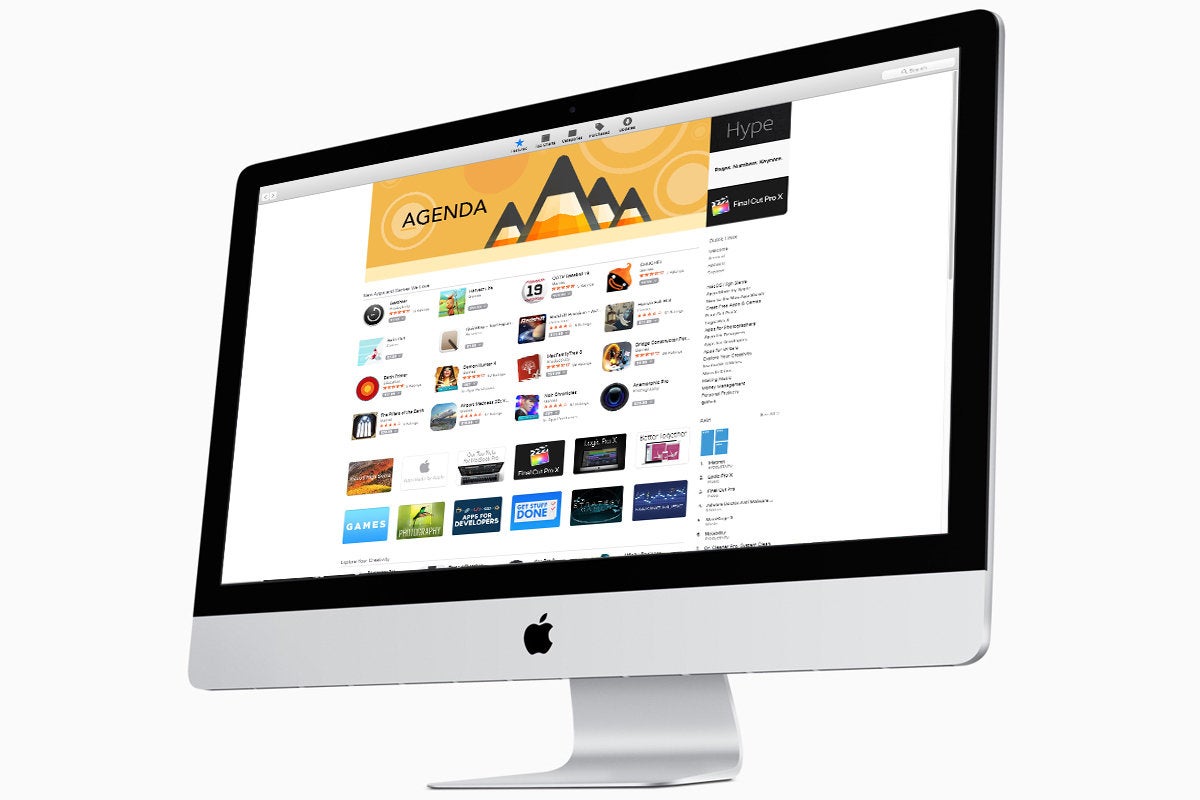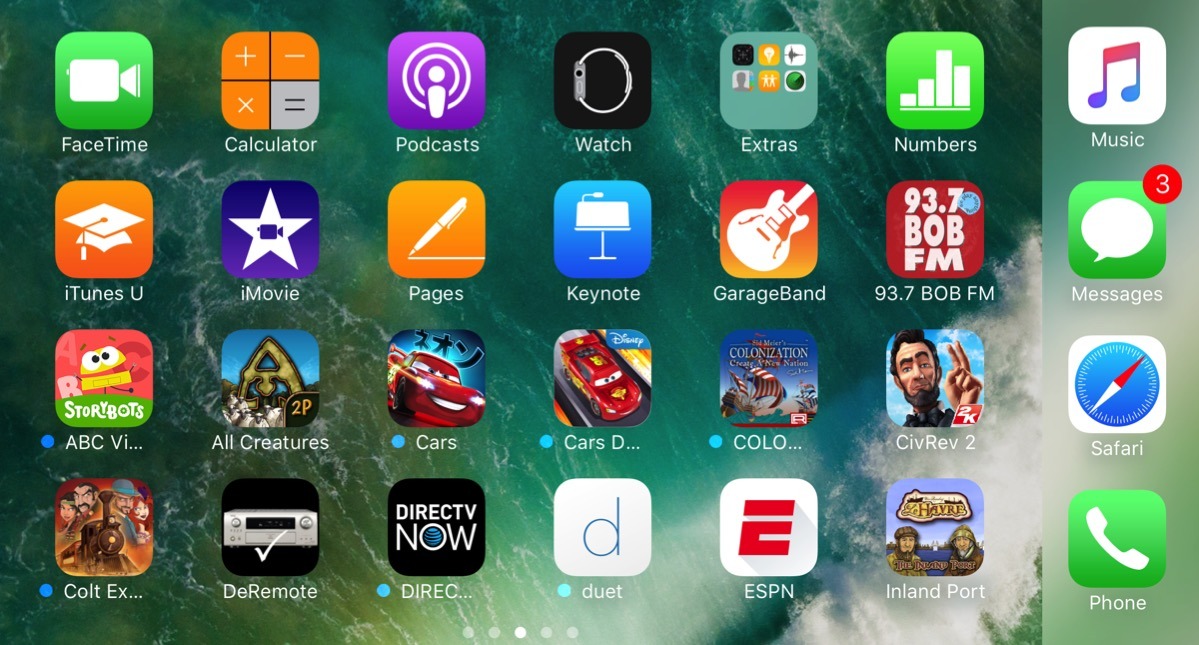- Uninstall App Osx
- Mac Osx Upgrade 32 Bit Apps Windows 10
- Mac Os X Find 32 Bit Apps
- Mac Os X Mojave 32 Bit Apps
- Apple 32 Bit Apps
Apple was phasing out the use of 32-bits applications on macOS for quite some time. Now the finishing time has come that the version 10.15 or macOS Catalina will no more support 32-bit applications. If you are still running old and unsupported applications in macOS Mojave or earlier versions then you need be cautious before upgrading to macOS Catalina. In this article, we will explain how to check 32-bit and 64-bit apps in macOS.
Go64 makes it easier to go 64-bit by helping you Take an inventory of the apps on your Mac and see which ones are still 32-bit. Go to a developer's website or search the web for update or upgrade information. Keep track of upgrade costs so you can plan your spending to get all the upgrades you need. Oct 09, 2019 32-bit apps can run on a 64-bit system as they've been doing for years, but Apple wants to get rid of outdated apps to make sure everything that runs on the Mac is properly optimized and isn't an.
What Happens When You Open 32-bit Apps?
As of macOS Mojave, Apple will show a warning message whenever you open 32-bit apps. The best example of 32-bit app on macOS is Microsoft Office 2011. Whenever you open the app, macOS will show you a message like below indicating that the app is outdated and not optimized for your Mac.
However, you can still click on the “OK” button to continue using the app. Unfortunately, this is no more possible with macOS Catalina. When the 32-bit app is on the dock, you will see a white cross mark on the app indicating it will not work any more.
Trying to open the 32-bit with macOS Catalina will show a messages like below depending on the app:

Uninstall App Osx
Word 2011:
Kaspersky Antivirus Pro:
iPhoto:
Basically you have the following three options:
- Go to the App Store and find the replacement or upgraded app.
- Click on “Learn More…” button to go to Apple’s page explaining about 32-bit apps.
- Choose “Not Now” button to close the app.
Mac Osx Upgrade 32 Bit Apps Windows 10
If there are no upgrade or alternate options then you can’t use 32-bit apps with macOS Catalina.
Related:How to fox slow performance and speedup your Mac?
How to Check 32-bit and 64-bit Apps in macOS?
If you wanted to check how many apps on your Mac are running with 32-bit then follow the below instructions.
- Click on the Apple menu icon on top left corner of the Mac and choose “About This Mac” option.
- Under the “Overview” tab, click on “System Report…” button.
- You will see a system information dialog like below. Click on the “Applications” option available under “Software” section. It may take sometime to load the list depending upon the number of apps on your Mac.
- Select any application to view the details on the below pane. You can check against the “Kind” option whether it shows 32-bit or 64-bit apps.
- Generally, all Apple apps should be of 64-bit. Therefore, you can click on the “Obtained from” column to sort the list based on the developer.
- Check the apps downloaded from Mac App Store, Identified Developer or Unknown categories to easily find the 32-bit apps.
- You can clearly see the Kind will show as “32-bit (Unsupported) indicating the app will no more work on your Mac.
Taking Action
Unfortunately, you have no option to modified any parameter on the apps. If you have premium apps purchased from App Store or directly from third-party websites, contact the developer and inform them to upgrade a 64-bit version. For the free apps, you need to find alternatives from App Store from other developers.
If you have no other option to use the app then delay upgrading to macOS Catalina till the time you find alternative solution.
With the arrival of macOS Catalina, Apple's transition towards 64-bit technology is complete. Starting with macOS Catalina, 32-bit apps no work on your computer. With that being said, there are some workarounds to consider if you happen to have older software that's essential for work or play. Think VM!
Do this first
Before doing anything else, you should check with the app developer to see if a 64-bit version of your software title is available. The transition to 64-bit technology was a lengthy one for Apple and the odds are high that your developer did make the switch.
Do you have 32-bit apps installed on your system?
Moving on, you can confirm whether you have 32-bit apps on your Mac by:
- Choose the Apple icon on the Mac toolbar.
- Click About This Mac.
- Select System Report.
Select Legacy Software in the sidebar. All legacy software is 32-bit.
Use virtualization to run your old apps
Here's a look at the best ways to run older software on your Mac.
Running older software

The issue with running old versions of software is that it can eventually 'break' and not function on a future version of the OS you are running it on. You can hope that the vendor of your application will keep on updating the software to run on future OS updates, but what if you have a very specific program that is no longer maintained? Or perhaps you have a software license for your current version of an application but upgrading to a more modern version introduces too great a cost?
Mac Os X Find 32 Bit Apps
Running a virtual machine
One possible solution to the 32-bit application dilemma is to run a version of the latest macOS that fully supports your app in a virtual machine. A virtual machine, or VM, is an emulated computer running on top of your current OS installation as a program. The VM takes resources from your actual computer and uses them to run itself in a contained environment as a separate system altogether. Think of it like the Matrix where the real world is your physical computer and the 'dream' world in the VM.
Benefits of a VM
Since you needn't buy new hardware, you can simply run an instance of the macOS version that will run your application without issue regardless of that app being 32 bit or 64 bit for as long as you keep your VM. If you upgrade the macOS on your physical Mac, the VM version is completely separate from that process so you'll still be able to keep the 'old' macOS on the VM and run the 'new' macOS for all of your other up-to-date programs. You'll be able to have your proverbial cake and eat it too.
Setting up a VM
There are a few options for VM software solutions for you to choose from. You can run Virtualbox, VMware, QEMU, and Parallels. All of the non-open source VM managers have free 'lighter' versions that will serve our purpose but you can get their full fledge versions that provide various features that are beyond the scope of this article.
We will be using Parallels Lite that is freely downloadable from the App Store. We chose Parallels Lite due to their ease of setup and ability to function on top of a macOS host passing system information that is needed for the guest macOS to properly install. Note that if one day you'd want to change your Mac's operating system to Windows or Linux then you'd might want to install one of the other mentioned VM managers since those can run on those host OSs albeit with a much more involved setup.
We will also be using macOS High Sierra as the installed OS. You can use these instructions for older versions as well. Credit to Howtogeek.com for the command line bits to make a disk image to install macOS High Sierra from their Virtualbox install instructions on Windows 10.
- Download Parallels Lite from the App Store.
Download (but do not install) macOS High Sierra.
We need to create the install image so we need to start Terminal.
- In Terminal in your home directory type or copy and paste line by line the following:
- hdiutil create -o HighSierra.cdr -size 7316m -layout SPUD -fs HFS+J
- hdiutil attach HighSierra.cdr.dmg -noverify -nobrowse -mountpoint /Volumes/install_build
- asr restore -source /Applications/Install macOS High Sierra.app/Contents/SharedSupport/BaseSystem.dmg -target /Volumes/install_build -noprompt -noverify -erase
- hdiutil detach /Volumes/OS X Base System
- hdiutil convert HighSierra.cdr.dmg -format UDTO -o HighSierra.iso
- mv HighSierra.iso.cdr HighSierra.iso
- Start Parallels Lite.
- Select Linux only.
- Click Continue.
- Select Install Windows or another OS from a DVD or image file.
Click Continue.
- Select Image File.
- Click Select a file.
- Navigate to your home directory and select the HighSierra.iso file we created in terminal.
- Click Open.
- Click Continue.
- Select macOS as the operating system type.
Click OK.
- Navigate to the folder to house the VM.
- Click Select.
Name your VM and click Create.
- You can optionally set up any VM options you desire such as (note that these can be changed later too):
- Startup and sharing settings in the Options tab.
- Choose CPU, memory and graphic options in the Hardware tab.
- Still under the Hardware Tab select the CD/DVD sub-option.
- Click the dropdown arrow for Source.
- Select Chose an Image File.
- Navigate to your home folder and select the HighSierra.iso file we created in terminal.
- Select Open.
- Select Continue.
- You can now Start the VM.
- Install macOS like you would normally do on any real system
Once you have a completed install, you'll want to install the Parallels Tools program in your VM macOS. This will allow you to be able to seamlessly use your mouse between your real desktop and your VM desktop as well as resize your VM screen on the fly with proper display attributes.
Mac Os X Mojave 32 Bit Apps
- Click the highlighted yellow exclamation point over your VM window.
- Click Continue.
On your VM, double-click the Parallels Tools installer that opens.
- Complete the installation and reboot your VM.
Final comments
You now have a full-fledged macOS installation that you can keep for your older 32-bit applications once macOS decides to give them the boot. You'll be able to make snapshots of the VM to have different save states. You'll be able to run all native macOS applications you normally do. The drawback will be the speed of execution and disk speed but if you have a powerful Mac, you may not notice too much of a difference depending on the application. Does this solution work for you? Tell us what you'd rather see happen for 32-bit applications on macOS in the comments!
We may earn a commission for purchases using our links. Learn more.
HackedBreaking: More Twitter account features disable due to crypto hack
Apple 32 Bit Apps
Verified and non-verified Twitter accounts are having some features disabled, including the ability to tweet. Twitter is recommending resetting your password.